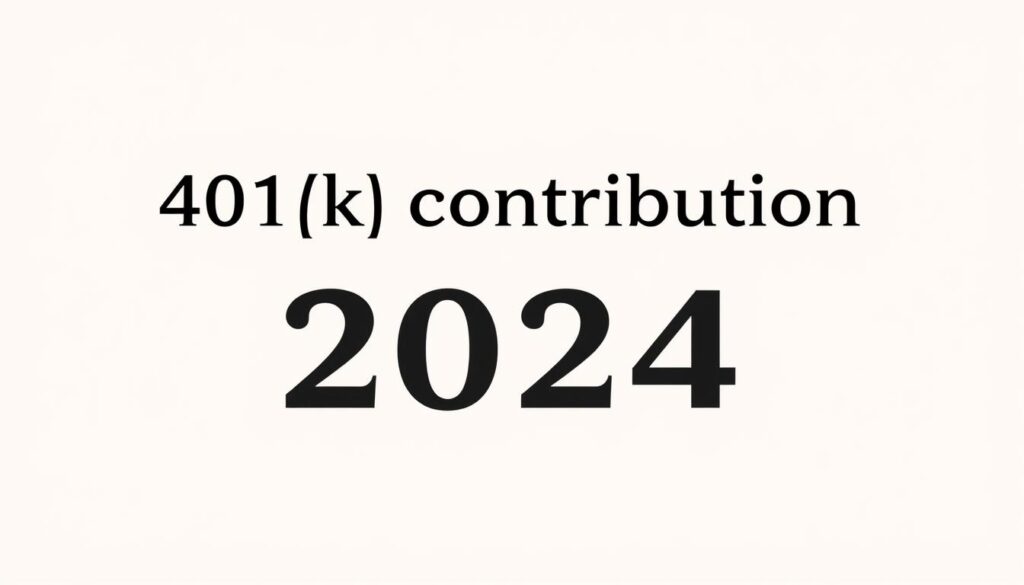Did you know your workplace retirement plan could come with free money? Many companies offer a matching contribution when you save in your 401(k). This perk boosts your retirement savings without extra effort.
Yet, research shows 25% of employees don’t claim the full match. That’s like leaving cash on the table. The average employer adds 4.6% of your pay, according to Vanguard. Small contributions now can grow into big savings later.
To maximize this benefit, learn how matching formulas work. Some companies match dollar-for-dollar, while others use a percentage. There are also contribution limits and vesting rules to consider.
Key Takeaways
- Employer matches act like bonus cash for your future.
- One in four workers misses out on this benefit.
- Typical matches equal 4.6% of your salary.
- Different companies use unique matching formulas.
- Vesting schedules affect when you own the matched funds.
What Is 401(k) Employer Matching?
A 401(k) match is essentially free money added to your retirement plan. When you save a portion of your paycheck, your company may contribute extra funds based on your employee contributions. This perk accelerates your savings growth.
Matches vary by company. Some offer dollar-for-dollar matches, while others contribute a percentage. For example, Fidelity reports a common formula:
- 100% match on the first 3% of your salary.
- 50% match on the next 2%.
Not all employer contributions require matching. Profit-sharing or fixed deposits might also boost your account. Check your plan details to know what’s offered.
For 2024, the IRS caps employee contributions at $23,000 ($30,500 if over 50). Employer matches don’t count toward this limit, so maximize this benefit while you can.
How 401(k) Employer Matching Works
Your paycheck isn’t the only place your company invests in your future. Many businesses add employer matches to your retirement savings when you contribute. These formulas vary, but they all share one goal: growing your nest egg faster.
The Basics of Employer Contributions
Most plans use one of two matching structures:
- Full match: 100% of your contributions up to a set percentage of your salary (e.g., 3%).
- Partial match: 50% of your contributions until a higher cap (e.g., 6% of salary).
“Our policy matches 50% of employee contributions up to 6% of compensation. This encourages consistent saving while rewarding loyalty.”
Example Scenarios
Let’s break down how this works with a $60,000 salary:
| Match Type | Employee Contribution | Employer Match |
|---|---|---|
| Full 3% Match | $1,800 (3%) | $1,800 |
| Partial 6% Match | $3,600 (6%) | $1,800 |
Note: Some companies offer true-up contributions. If you max out early, they’ll adjust the match at year-end. Always check your plan’s rules.
Remember, employer contributions don’t count toward your $23,000 IRS limit. That’s extra free money working for you.
Types of Employer Matches
Not all retirement matches are created equal—some pack a bigger punch. Companies use different formulas to boost your savings. Knowing which type you have helps you maximize the free money.
Partial Matching: The 50% Boost
A *partial match* adds 50% of your contributions up to a cap. For example, Empower’s plan matches 50% on 6% of an $80k salary. That’s $2,400 extra per year.
These matches have ceilings. Contribute beyond 6%, and the bonus stops. Always check your plan’s rules to avoid missing out.
Full Matching: Dollar-for-Dollar Growth
With a *100 match*, your employer doubles your cash up to a limit. First Source’s plan covers 100% of contributions up to 4% of pay. Save $3,000, and they add another $3,000.
Fidelity’s common tiered formula combines both types:
- 100% on the first 3% of your *percentage salary*.
- 50% on the next 2%.
“Match structures incentivize saving. A tiered approach balances employee participation with company costs.”
Some *employers offer* fixed contributions too. Review your plan documents to see what’s available. Every dollar matched is a step toward a richer retirement.
401(k) Contribution Limits for 2024
Saving for retirement? Know the 2024 limits to avoid surprises. The IRS adjusts these caps yearly to reflect inflation and tax policies. Staying within them ensures your funds grow tax-deferred without penalties.

Employee Contribution Limits
In 2024, you can stash up to $23,000 in your 401(k). If you’re 50+, an extra $7,500 catch-up bumps the limit to $30,500. This applies to both traditional and Roth 401(k) plans.
Compare this to 2023’s caps:
| Year | Standard Limit | Catch-Up (50+) |
|---|---|---|
| 2023 | $22,500 | $7,500 |
| 2024 | $23,000 | $7,500 |
Combined Employee and Employer Limits
Your contributions 401 plus employer matches can’t exceed $69,000 ($76,500 with catch-up). Unlike your personal cap, this includes:
- Employer matches
- Profit-sharing deposits
- After-tax contributions (if allowed)
“Highly compensated employees (HCEs) may face reduced matches if lower-paid staff don’t participate enough. Plan ahead to avoid losing free money.”
Roth 401(k)s share the same limits as traditional plans. Mix both types, but ensure your total stays under the annual cap.
Understanding Vesting Schedules
Vesting schedules determine if you walk away with extra savings. These rules decide when employer contributions fully belong to you. Unlike your personal deposits, matched funds might have strings attached.
What Is Vesting?
Vesting means earning ownership over time. For example, First Source uses a 5-year average vesting schedule. Leave before that, and you could forfeit some matched money.
Your own contributions are always 100% vested. Only employer-matched amounts follow these rules.
Common Vesting Periods
Companies use two main structures:
- Cliff vesting: Own 100% after a set period (e.g., 3 years). Leave early, get nothing.
- Graded vesting: Earn 20% yearly over 5 years. Partial ownership grows gradually.
| Type | Timeline | Ownership at Year 2 |
|---|---|---|
| Cliff | 3 years | 0% |
| Graded | 5 years (20%/yr) | 40% |
Note: Empower offers immediate 100% vesting—a rare perk.
“Always check your plan’s vesting schedule before changing jobs. Unvested matches stay with the company.”
Staying long enough unlocks every dollar. Plan strategically to keep your hard-earned savings.
How to Maximize Your 401(k) Employer Match
Unlock hidden potential in your retirement plan with these expert tips. While 78% of workers contribute enough to get their full match (Fidelity), many miss subtle opportunities. Smart strategies can help your savings grow faster.

Contribute Enough to Get the Full Match
Your company likely matches up to a specific percentage. For example:
- 5% salary contribution = 5% match at 100% rate
- 3% contribution = 3% match at 50% rate
Fidelity recommends saving 15% total (including matches). Even small increases add up over time.
Watch for Employer Matching Schedules
Some employers match per paycheck, others annually. Missing contributions in any period could cost you money. Compare common approaches:
| Schedule Type | How It Works | Risk |
|---|---|---|
| Per-Paycheck | Match each contribution immediately | Missing pay periods reduce match |
| Annual True-Up | Adjusts match at year-end | Must stay employed all year |
“Employees who front-load contributions often miss matches without true-ups. We recommend steady contributions throughout the year.”
Consider Roth 401(k) Options
The SECURE Act 2.0 now allows Roth 401 matches. Traditional matches grow tax-deferred, while Roth matches create tax-free income later.
Key differences:
- Traditional: Reduces taxable income now
- Roth 401: Tax-free withdrawals in retirement
Tools like Empower’s Retirement Planner help track progress. Take advantage of these resources to stay on target.
Conclusion
Your retirement savings get a powerful boost when you leverage an employer match. It’s essentially free money that grows over time. Missing out means leaving thousands on the table.
Follow these steps to maximize benefits:
- Learn your plan’s matching formula
- Track vesting schedules
- Adjust contributions to hit the full match
Tools like Fidelity’s calculator or IRA comparison guides can help optimize your strategy. Start now—your future self will thank you.
FAQ
What does 401(k) employer matching mean?
It’s when your company adds money to your retirement account based on what you contribute. For example, if they match 50% of your contributions up to 6% of your salary, they’ll add
FAQ
What does 401(k) employer matching mean?
It’s when your company adds money to your retirement account based on what you contribute. For example, if they match 50% of your contributions up to 6% of your salary, they’ll add $0.50 for every $1 you put in.
How much should I contribute to get the full match?
Check your plan’s rules. If your employer matches up to 5% of your salary, contribute at least 5% to maximize the free money they offer.
What’s the difference between partial and full matching?
Partial matching means your employer contributes a portion of what you save (e.g., 50%). Full matching means they match 100% of your contributions up to a set limit.
Are there limits to how much my employer can match?
Yes. The IRS sets combined contribution limits. In 2024, the total employee and employer contributions can’t exceed $69,000 (or $76,500 if you’re 50+).
What is a vesting schedule?
It determines when you fully own the matched funds. Some plans let you keep the money immediately, while others require you to stay with the company for a set number of years.
Should I choose a Roth 401(k) if my employer matches?
It depends. Roth contributions use after-tax money, but employer matches go into a traditional 401(k). If you expect higher taxes in retirement, a Roth could save you money long-term.
Can I lose my employer’s matching contributions?
Only if you leave before becoming fully vested. Always check your plan’s vesting rules to avoid forfeiting matched funds.
.50 for every
FAQ
What does 401(k) employer matching mean?
It’s when your company adds money to your retirement account based on what you contribute. For example, if they match 50% of your contributions up to 6% of your salary, they’ll add $0.50 for every $1 you put in.
How much should I contribute to get the full match?
Check your plan’s rules. If your employer matches up to 5% of your salary, contribute at least 5% to maximize the free money they offer.
What’s the difference between partial and full matching?
Partial matching means your employer contributes a portion of what you save (e.g., 50%). Full matching means they match 100% of your contributions up to a set limit.
Are there limits to how much my employer can match?
Yes. The IRS sets combined contribution limits. In 2024, the total employee and employer contributions can’t exceed $69,000 (or $76,500 if you’re 50+).
What is a vesting schedule?
It determines when you fully own the matched funds. Some plans let you keep the money immediately, while others require you to stay with the company for a set number of years.
Should I choose a Roth 401(k) if my employer matches?
It depends. Roth contributions use after-tax money, but employer matches go into a traditional 401(k). If you expect higher taxes in retirement, a Roth could save you money long-term.
Can I lose my employer’s matching contributions?
Only if you leave before becoming fully vested. Always check your plan’s vesting rules to avoid forfeiting matched funds.
you put in.
How much should I contribute to get the full match?
Check your plan’s rules. If your employer matches up to 5% of your salary, contribute at least 5% to maximize the free money they offer.
What’s the difference between partial and full matching?
Partial matching means your employer contributes a portion of what you save (e.g., 50%). Full matching means they match 100% of your contributions up to a set limit.
Are there limits to how much my employer can match?
Yes. The IRS sets combined contribution limits. In 2024, the total employee and employer contributions can’t exceed ,000 (or ,500 if you’re 50+).
What is a vesting schedule?
It determines when you fully own the matched funds. Some plans let you keep the money immediately, while others require you to stay with the company for a set number of years.
Should I choose a Roth 401(k) if my employer matches?
It depends. Roth contributions use after-tax money, but employer matches go into a traditional 401(k). If you expect higher taxes in retirement, a Roth could save you money long-term.
Can I lose my employer’s matching contributions?
Only if you leave before becoming fully vested. Always check your plan’s vesting rules to avoid forfeiting matched funds.


